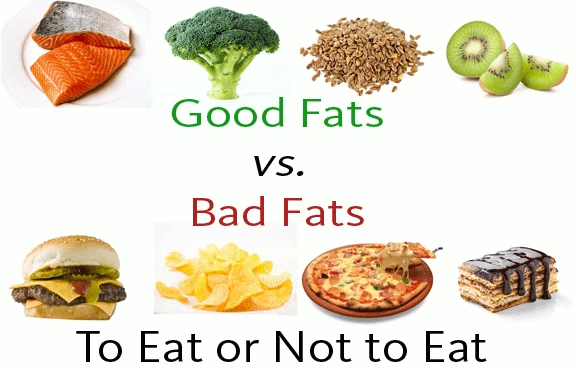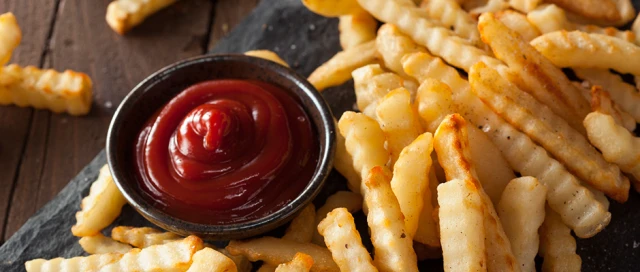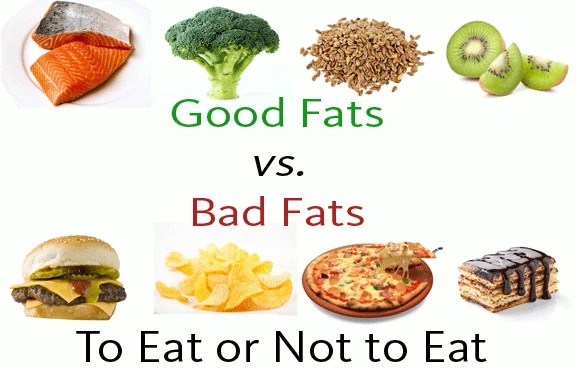healthy fats to eat

Our earth offers so many delicious and life-giving vegetables that we often forget there are also vegetables in the sea that are immensely beneficial for our health. One such vegetable is Irish Sea Moss. Scientifically known as Chondrus crispus it detoxes heavy metals, radiation, and toxins as well as a powerful nourisher of minerals and vitamins that supports the immune system. The human body is made up of 102 minerals and Irish Moss is said to contain 92 of them. It provides a wealth of important nutrients including; protein, beta-carotene, B vitamins, pectin, magnesium, Iodine, potassium, vitamin C, Sulphur, taurine, folate, vitamin K, iron, calcium phosphorus, zinc and many more. It is an excellent immune boosting food invaluable to healing. Its high vitamin and mineral content make it the perfect food to replenish and revitalize the body. It would be hard to say one particular plant has all the vitamins and minerals your body needs, but sea moss comes close. This is one powerhouse superfood we all can use in our lives.
The high fiber content in Irish Moss exerts a mild laxative effect whilst soothing inflamed tissues within the intestinal tract, potentially providing relief from a whole host of intestinal disorders. It’s demulcent properties promote healthy digestion – soothing the membranes of the digestive tract. The gelatin like content helps to ease gastritis, dyspepsia, nausea, heartburn and indigestion.
WEIGHT LOSS Irish Moss is thought to help reduce the appetite due to its ability to absorb moisture, increasing its volume and filling the intestinal tract with a bulking type material, thus increasing the feeling of fullness. Its gentle laxative effect can promote the elimination process of waste through the gastrointestinal tract. The aforementioned iodine content can boost metabolism which in turn will increase energy and can help to accelerate weight loss.
Packed with over 90 minerals and a host of vitamins, including Vitamin C, Irish Moss is a fantastic support for your immune system and general health. It also helps to dissolves mucus and congestion in the respiratory system due to being rich in potassium iodide. This sea moss also contains amino acids, antioxidants, antiviral and antimicrobial properties that help ward off infections. HELP TO REMOVE HEAVY METALS AND RADIATION Sea vegetables are fabulous for this! It is known that sea vegetables such as Irish Moss and dulse bind to heavy metals such as mercury in the ocean. Many are worried that the heavy metals will be released into the body if these sea vegetables are eaten – however, this is not the case. In fact, they soak up heavy metals and radiation in the body and don’t let go until they have exited the body. Irish Moss and dulse will hang out by the colon and make sure the toxins and metals leave your system. As we are exposed to heavy metals and radiation daily, Irish Sea Moss makes a wonderful addition to your daily regimen.
Rich with minerals and vitamins, Irish Moss uniquely nourishes your skin, hair, and nails. Its gelatin-like quality makes a great base for homemade lotions and salves that can be used to soothe eczema, psoriasis, dermatitis and burns. A compound in Irish Moss has been linked to be anti-aging and able to renew cell growth and metabolism. Not to mention, all the antioxidants – which are your best friend for great skin. And guess what? Irish Moss also has benefits for the bones, tendons, ligaments, connective tissue, and teeth!
SUPPORT THE BOOST OF ENERGY & MOOD When your body is low on essential minerals like iron, magnesium and potassium, your energy and mood can take a downturn. Irish Moss is rich in both of these mood-boosting minerals; plus, it also creates electrolytes to help assist your body with handling stress. Sea vegetables are particularly beneficial for the endocrine system, helping regulate hormones that can dictate your mood. Additionally, preliminary studies have found Irish Moss to aid with Parkinson’s disease, suggesting it protects brain tissue.
HELPS TO BOOST MENTAL HEALTH Sea moss has high amount of potassium, which are essential for the smooth functioning of your body cells. As your body cannot conserve potassium, it is important for you to add sea moss in your diet to promote your mental functions and behavior. It also helps you to get a good relief from anxiety disorders, depression, fibromyalgia, agitation, moodiness and agitation. Irish Moss also has Algin, which is a phytonutrient with an impressive therapeutic value that helps it to perform like a heavy metal detoxifying agent. This ingredient in the sea moss helps in removing the heavy metal residue from your body tissues.
PROMOTES HEALTHY SEXUAL FUNCTION Due to the generous amount of zinc and other minerals that are vital for reproductive function and health, sea moss is great for anyone who desires an increased sex drive. Because of its anti-inflammatory properties, sea moss promotes circulation throughout the entire body especially our reproductive organs. For male readers who are experiencing difficulty with sex related drive, stamina, erection, and other abnormalities, then you should consider consuming sea moss regularly. For female readers who are experiencing a lack in desire, painful sexual experience due to dryness, feminine irritation, and anything else related to this particular topic, then a regular dose of sea moss may improve this situation.
PROMOTES RECOVERY Irish Moss can strengthen the connective tissues. This helps it to recover faster after a strenuous workout session or from surgeries, invasive procedures and serious injuries. It has several minerals and vitamins to help you recover from illnesses and diseases quickly by replenishing and supporting the immune system. The Irish Moss also helps in quick recovery from debilitating medical issues like pneumonia and tuberculosis. As it maintains a nutrition rich profile, it helps people suffering from hypertension and arteriosclerosis recover much faster.
BOOST THYROID HEALTH Perhaps one of the most important and undervalued benefits of this sea moss is its ability to help balance thyroid hormones. Irish Moss contains the vital thyroid hormone precursor DI-Iodothyronine (DIT), and the thyroid hormones Thyroxin (T4) and Tri-iodothyronine (T3). If the thyroid doesn’t produce these hormones as it should, this can have a detrimental effect on metabolism and many other bodily systems. These have been found to be the main organically bound iodine compounds in Irish Moss. Irish Moss is also extremely high in the trace element iodine – the thyroid gland contains the highest concentration of iodine than any other organ in the body. You cannot make thyroid hormones without sufficient levels of iodine.
Being a potent source of potassium chloride, this sea moss dissolves catarrh, phlegm and soothes inflammation of the mucus membranes to prevent congestion, helping to clear out the lungs of any phlegm that builds up with a common cold. Because of these expectorant qualities, Irish Moss may help to prevent a common cold from turning into pneumonia and can treat other respiratory problems such as bronchitis. Irish Moss also has powerful antiviral properties, helping to prevent or treat a myriad of disorders such as flu, sore throats, chesty coughs and much more.
Are you afraid of fats? If so, you’re not alone. Fat in foods has been vilified in America for the past few decades, as low-fat and non-fat foods became the norm and we were told that cutting even healthy fats out of the diet would help us get the body we want. In fact, it’s one of the biggest nutrition lies that the public’s been told throughout history.
In other parts of the world, fat has always been welcome at the table. In the U.S., though, we’re only now realizing the truth: not all fats are created equally. Our bodies need fat — more specifically, they need healthy fats. And as high-fat diets like the ketogenic diet continue to gain widespread popularity, more and more people are eager to know what fats qualify as healthy.
So how did fats get on the naughty list to begin with? Post-World War II, research began emerging that seemed to link foods with saturated fats, like eggs and red meat, to coronary heart disease. By the 1960s, the American Heart Association had recommended that people reduce their fat intake, and in 1976, the U.S. Senate held a series of committee meetings on the topic. Subsequent food guidelines advocated for eating less saturated fat and more carbohydrates, triggering a war on fat.
While the guidelines called for more carbs in the form of fruits, vegetables and whole grains, what the average American understood was that carbs — any kind of carbs — were good (even refined carbohydrates!) and all fat was bad. The food industry pounced and high-carb, low-fat foods became the norm. Grocery store shelves and refrigerators were soon lined with low- and no-fat items that were packed with sugar to help enhance the flavor. Not coincidentally, both a sugar addiction as well as an obesity epidemic in America began soon after low-fat diets became the standard recommendation.
Plus, subsequent studies have also found that picking the right types of fat and adding plenty of high-fat foods to your diet could actually bring some big benefits to your health. One study in the New England Journal of Medicine found that when subjects ate either a Mediterranean diet, low-fat diet or low-carb diet, those following a high-fat, low-carb meal plan not only lost the most weight but also drastically reduced their bad cholesterol levels. (2)
So what is saturated fat? The saturated fat definition includes fatty acids without double bonds. Saturated fat foods include ingredients like butter, coconut oil and dairy products. Although once considered unhealthy and artery-clogging, more and more research has shown that saturated fats can be included as part of a healing diet in moderation.
Meanwhile, the official unsaturated fat definition encompasses any type of fatty acid that contains at least one double bond within the chain. These fats are further classified as either a monounsaturated fat or polyunsaturated fat based on the number of double bonds they contain. Unsaturated fats can include foods like vegetable oils, nuts, seeds and fish.
Unlike saturated fats, the benefits of unsaturated fats have long been established. In fact, studies show that unsaturated fatty acids can help promote weight loss, reduce inflammation and lower the risk of heart disease. (3, 4, 5)
When comparing saturated vs. unsaturated fat, it’s generally recommended that unsaturated fatty acids should make up the majority of your fat intake. One study in 2015 showed that replacing just 5 percent of calories from saturated fats with an equal amount from polyunsaturated or monounsaturated fatty acids resulted in a 25 percent and 15 percent reduced risk of heart disease, respectively. (6) However, both offer a unique set of benefits and can be included in moderation as part of a well-balanced and healthy diet.
The benefits of avocados are so numerous that they’re one of the healthiest fruits you can consume, not to mention one of the top healthy fats for keto. Avocado nutrition is rich in monounsaturated fats, which raises levels of good cholesterol while lowering the bad — talk about a double-whammy. Avocados are also packed with the benefits of vitamin E, which help fight free radical damage, boost immunity and act as an anti-aging nutrient for your skin. (7)
Plus, it’s chock-full of healthy protein; in fact, it has more than any other fruit. For pregnant women, avocado is also one of the best folate foods, which is an important micronutrient that can help reduce the risk of birth defects to ensure proper growth and development. (8)
Get more avocados in your diet by trying one of these avocado recipes. Alternatively, use it to cook with by adding avocado oil to your kitchen pantry. It has a mild taste that won’t overpower dishes the way other oils might and also has a high smoke point, which means it works well for grilling or frying. And because it remains a liquid at room temperature, it’s a tasty choice to drizzle on salads, sandwiches or veggies.
Another victim of the war on fat, butter has recently experienced a comeback as the benefits of butter become more widely known. The omega-6 and omega-3 fatty acids found in butter help your brain function properly and improve skin health. More importantly, these two fatty acids are considered essential, meaning the body needs them but can’t produce them on its own; instead, they must be consumed from food sources. Butter is also rich in fat-soluble vitamins and trace minerals, including beneficial selenium, a powerful antioxidant. (9)
Meanwhile, the Indian version of butter is quickly becoming a favorite across the globe. Ghee, or clarified butter, is simmered to bring out butter’s naturally nutty flavor, leaving it with a high smoke point that makes it ideal for cooking at high temperatures. Ghee benefits include being loaded in fat-soluble vitamins A and E. These types of vitamins are best absorbed by your body when they’re in a high-fat substance and then stored in your gastrointestinal tract, keeping your metabolism and digestion on track. It’s also lactose- and casein-free, which makes it a fantastic alternative to butter if you suffer from lactose sensitivity or intolerance.
Not only does coconut oil top the charts as one of the healthiest cooking oil options, but you can also apply coconut oil on your skin or use coconut oil for your hair as well. It’s rich in medium-chain fatty acids, which are easy for your body to digest, not readily stored by the body as fat and small in size, allowing them to infuse cells with energy almost immediately. (10)
These fatty acids also improve brain and memory function. (11, 12) Plus, the high amount of natural saturated fats in coconut oil means it increases good cholesterol and promotes heart health while the antioxidants found in coconut oil make it an effective anti-inflammatory food to help potentially reduce arthritis symptoms. (13)
Best of all, adding coconut oil to your diet is easy. You can use it for cooking or baking or even try applying it directly to the skin. Beware that when cooking directly with coconut oil, the flavor can be a bit overpowering for some. If that’s the case, try using a bit less. It’s also important to note that, at room temperature, coconut oil is solid, so it’s not the best choice when you need a healthy fat in liquid form. Additionally, when choosing a coconut oil, extra virgin varieties are best, as refined or processed coconut oils can eliminate many of the health benefits.
Is olive oil good for you? Believe it or not, the olive oil benefits are so profound that almost any diet should include it. First, extra virgin olive oil (EVOO) is great for heart health. In fact, olive oil consumption has been linked to lower blood pressure, reduced cholesterol levels and improved blood vessel function. (14, 15, 16) The high amount of antioxidants in EVOO means it protects your cells from damage. It also helps improve memory and cognitive function and works as an anti-inflammatory agent. (17) Since inflammation is at the root of most diseases, this is a biggie! (18)
Fatty fish varieties like salmon, sardines, mackerel and anchovies are packed with heart-healthy omega-3 fatty acids that are absolutely crucial to health. These fats are considered essential fatty acids because the body isn’t capable of producing them on its own, which means we must rely on omega-3 foods in our diet to supply these key compounds.
There are actually three different types of omega-3 fatty acids: ALA (alpha-linolenic acid), DHA (docosahexaenoic acid) and EPA (eicosapentaenoic acid). The preferred sources of omega-3s are DHA and EPA, the kinds found in seafood sources like nutritious salmon and sardines. (19) ALA, on the other hand, is found in many plant foods, including nuts and seeds and certain vegetables like Brussels sprouts.
The body is able to turn ALA into usable DHA and EPA to some degree, but this isn’t as efficient as getting DHA and EPA directly from food sources that provide it. Even after extensive research, it’s not totally clear how well ALA converts into EPA and DHA or if it has benefits on its own, but health authorities, like those at Harvard Medical School, still consider all sources of omega-3s crucial in the diet. (20)
If fatty fish isn’t a regular part of your diet, you may want to consider supplementing with fish oil, krill oil, cod liver oil or a vegetarian alternative like algal oil. These supplements can help deliver the omega-3 fatty acids you need to fight inflammation and promote better heart health.
A welcome addition for vegetarians and vegans, nuts and seeds are a terrific option for getting more healthy fats into your diets. For starters, they’re extremely easy to incorporate into your diet; they’re also fairly affordable and easily transportable, making them perfect for snacking. Aside from being a great source of healthy fats, nuts and seeds offer a wealth of benefits for our bodies. Regularly eating them can help lower bad LDL cholesterol to keep your arteries clear and your heart healthy. And like other foods rich in omega-3s, nuts and seeds are also considered brain foods, and certain types are even recommended to help improve mood and defeat depression. (21)
The beauty of nuts and seeds is that you’re spoiled for choice. Walnuts are a great high-fat option with 5 grams of fat per serving, and almonds are packed with vitamin E, but there are so many nuts to choose from that you really can’t go wrong. In fact, hazelnuts, Brazil nuts and macadamia nuts all have their own delicious nutritional profiles and are rich in healthy fats like oleic acid. You can also opt for nut butters, which make a great snack when paired with apple slices or carrot sticks. Look for nut butters with just one or two ingredients and skip those with added sugars and fillers. You can also try toasting nuts and sprinkling them over salads for an instant boost of healthy fats.
For seeds, flaxseeds and chia seeds are two of the top choices. They’re both high in fiber and fat but low in carbs. Add seeds to yogurt or sprinkle in your smoothie, like in this keto smoothie recipe with avocado, chia seeds and cacao.
This little wonder food checks all the boxes. It’s an inexpensive food that’s packed with protein and a full amino acid profile. And contrary to decades of popular belief, eggs also don’t raise bad cholesterol levels. In fact, consuming eggs can actually lower cholesterol while improving heart health. (22) The choline found in eggs is also helpful at keeping our brains in tip-top shape. (23)
Additionally, a higher consumption of eggs can reduce your risk of metabolic syndrome, a cluster of conditions including factors like excess body fat, high blood sugar levels and abnormal cholesterol levels. Having any of these conditions makes you more likely to suffer from heart disease, stroke or type 2 diabetes. A 2016 study found that adults over 40 years old who regularly ate eggs significantly reduced their risk of metabolic syndrome. (10)
What can make eggs confusing are all the options. Some people advocate eating just egg whites, which is a mistake. Egg yolks are full of nutrients and healthy fats, and to get the full benefits of eggs, you should be consuming it all. Additionally, while egg carton claims can get tricky, the rule of thumb is to opt for free-range eggs, which have been shown to be higher in healthy fats and contain more omega-3s. (24)
Choosing grass-fed over grain-fed is important because meat from cows that are nibbling on grass instead of grains comes loaded with extra benefits. It has significantly more omega-3 fatty acids and conjugated linoleic acid, or CLA, which helps to prevent cancer and other diseases, like diabetes and cardiovascular disease. (25, 26)
CLA may also reduce the risk of heart disease, thanks to its high antioxidant levels and ability to lower bad cholesterol. (27) And grass-fed beef is often considered safer than grain-fed beef, as using antibiotics and hormones in grass-fed beef is much less common. Remember, you are what you eat eats, so you want to choose the best quality possible. And when it comes to beef and healthy fats, grass-fed beef is definitely the winner.
MCTs, aka medium-chain triglycerides, are a type of saturated fat jam-packed with heath benefits. They’re easily digested and sent to the liver, where they can give your metabolism a kick-start. In fact, some people even add MCT oil to their morning coffee because it gives you more energy and helps you feel full, a great double-whammy if you’re trying to maintain a healthy weight. (28)
If you’re able to tolerate dairy, full-fat dairy can be an excellent source of heart-healthy fats. Probiotic yogurt, in particular, is a staple on the healthy fats list as it contains beneficial bacteria that can help optimize the health of your gut microbiome to promote better overall health. Upping your intake of probiotics can also support healthy digestion, boost immunity and reduce cholesterol levels. (29)
Raw milk is another of the most popular sources of healthy fats. Raw milk comes from grass-fed cows and hasn’t be pasteurized or homogenized, keeping intact all of the vitamins, minerals and natural enzymes that milk has. Raw milk doesn’t contain added sugar or other ingredients and may even help reduce allergies, according to some studies. (30)
Many people also wonder: is cheese bad for you? Like other dairy products, not all cheese is created equal, but it can be part of a nutritious, well-rounded diet. Ideally, look for varieties that are raw, minimally processed and derived from grass-fed animals. Feta, goat, ricotta and cottage cheese are a few of the top healthiest cheese options available.
Not only does dark chocolate taste great, but it’s also considered a superfood as well. It’s high in fat and rich in antioxidants, which help protect our bodies from disease-causing free radicals. The flavanols found in dark chocolate also improve heart health, thanks to their ability to lower blood pressure and get more blood flowing to the heart and the brain. (31) And if you’ve ever found that nibbling on a piece of chocolate helps you focus, you’re not alone. It’s a brain food that actually helps improve cognitive performance. (32)
That being said, not all dark chocolate is stellar for your health. I recommend choosing a chocolate that contains at least 70 percent cacao or higher. This minimizes the amount of sugar and means you’ll be getting a solid antioxidant boost. And wherever possible, look for brands that do fair trade and use organic cacao beans to get the most bang for your buck.
It also has several other positive effects on health as well. Although it may seem counterintuitive, eating good fats for weight loss can be extremely beneficial. Fat is digested more slowly than carbohydrates and protein to promote satiety and helps bump up the flavor of foods. Both human and animal studies have found that fat can suppress food intake later in the day, which could potentially enhance weight loss. (34)
Certain types of fat also possess anti-inflammatory properties, which can help protect against chronic disease and help improve health. Omega-3 fatty acids, for example, have been shown to relieve inflammation and reduce symptoms of autoimmune conditions like rheumatoid arthritis, psoriasis and Crohn’s disease. (35) Monounsaturated fatty acids, on the other hand, may help increase good HDL cholesterol, lower triglyceride levels and decrease the risk of heart disease. (36)
Plus, eating a good variety of foods high in fat can also boost brain function. Loading up on the healthy fat foods can soothe inflammation and promote blood flow to the brain to enhance cognitive function. In particular, medium-chain fatty acids, omega-3 fatty acids and unsaturated fats play a critical role in brain function and development. (11, 37, 38)
According to Ayurveda, fats are used to promote healthy skin, support satiety and calm the nerves. On an Ayurvedic diet, it’s generally recommended to steer clear of trans fats and include plenty of vegetable-based fats and omega-3 fatty acids. Saturated fat is also encouraged in moderation by increasing your intake of foods like ghee, coconut oil and grass-fed beef.
Healthy ingredients that are high in fat are also used in Traditional Chinese Medicine to treat a variety of ailments. Beef, for example, is said to tonify the chi, strengthen the blood, relieve bloating and swelling and keep the spleen healthy. Avocados, on the other hand, are considered cooling and are believed to moisten the lungs, nourish the blood and treat stomach ulcers.
But while there’s still a good amount of debate on the question “Is saturated fat bad?,” there’s no arguing that trans fats should be cut out of your diet altogether. Trans fats are often added to foods through a process called hydrogenation, which is used to increase the flavor and texture while extending the shelf-life of foods like vegetable oils.
Trans fats are typically found in highly-processed fatty foods such as crackers, cakes, donuts and pastries. Studies show that eating this unhealthy type of fat can have detrimental effects on health; one study in the New England Journal of Medicine even reported that each 2 percent increase in calories consumed from trans fats nearly doubled the risk of coronary heart disease. (39)
In fact, while carbohydrates from whole grain, fiber-rich sources can be beneficial, refined carbohydrates found in foods like candies, white bread, baked goods and sweets provide little in terms of nutrition apart from extra calories and sugar. According to a study in the Journal of the American College of Cardiology, refined carb intake was associated with a higher risk of coronary heart disease while consumption of whole grains and polyunsaturated fats was linked to a lower risk. (6)
Just like when selecting healthy sources of fat to include in your diet over fried foods and processed junk, opting for nutrient-dense carbohydrates is key. Go for healthy, gluten-free grains like quinoa, amaranth, brown rice and oats. Include a good variety of fruits, vegetables and legumes in your diet. Limit your intake of heavily processed and refined carbs to help improve the quality of your diet.
Most sources recommend getting at least 20–30 percent of total calories from fat, although this amount can vary quite a bit. (40, 41) If you’re looking at our ketogenic diet food options, for instance, heart-healthy fats should make up anywhere between 40–75 percent of total calories consumed.
The majority of your fat intake should be from unsaturated fats, such as nuts, seeds, avocados and olive oil. So how much saturated fat per day should you aim for? Both the Dietary Guidelines for Americans and World Health Organization currently recommend limiting saturated fat intake to less than 10 percent of daily calories. (42, 43) Stick to healthy sources of saturated fat such as grass-fed beef, coconut oil and MCT oil rather than fried foods or processed meats that are laden with additives and harmful ingredients.
Wondering how to eat more healthy fats to help improve your health? There are plenty of healthy fat diet plan options out there, but the easiest way to get started is by simply adding a few nutritious ingredients into the meals you already eat. Try swapping out the low-fat yogurt for a full-fat variety, sprinkling nuts and seeds into your oatmeal, salads and smoothies and drizzling olive oil over roasted veggies and side dishes for an added dose of healthy fats.
Dietary fat has been in the limelight since the 1950s, when researcher Ancel Keys conducted a study analyzing the diet patterns of seven different countries as well as their respective rates of heart disease. At the conclusion of the study, he found that higher levels of serum cholesterol were associated with a higher risk of heart disease and believed that a higher intake of foods high in saturated fat was to blame. (44)
Following the momentous Seven Countries Study, organizations like the American Heart Association began urging consumers to cut down on consumption of saturated fat to improve heart health despite the lack of evidence demonstrating a clear link between saturated fat and heart disease. Not only did this cause confusion for consumers about the differences between saturated versus unsaturated fat, but it also caused many people to associate overall fat intake with weight gain and heart problems.
Although fat is an essential part of the diet, keep in mind that most high-fat foods are also considered calorie-dense foods. When increasing your intake of healthy fats, it’s important to account for this by making modifications to your diet, such as decreasing your intake of refined carbs or sweets. Without making a few simple swaps to your diet, adding high-fat, high-calorie foods can lead to weight gain.
Additionally, adding plenty of nutritious fats to your diet is just one piece of the puzzle when it comes to health. Be sure to round out your diet with plenty of protein foods as well as a good variety of fruits, vegetables, legumes and whole grains to make sure you’re meeting your nutritional needs, and pair a well-balanced diet with regular physical activity and a healthy lifestyle for best results.
Fats have unfairly gained a bad reputation in the diet and nutrition world. While some of this bad reputation is valid, there are many good fats that are essential components of any healthy diet. While consuming bad fats may result in unhealthy outcomes like weight gain, heart disease, and diabetes, eating good fats can lower cholesterol levels, improve functionality throughout the body, and promote weight loss.
The key to reaping these benefits is identifying the good fats from the bad fats. A fat generally is categorized as “good” if it is monounsaturated or polyunsaturated. The monounsaturated variety is particularly favored for its ability to reduce the risk of heart disease and reduce inflammation throughout the body. Polyunsaturated fats like omega-3 and omega-6 fatty acids similarly are also healthy. They promote cell growth and brain function while also lowering levels of bad cholesterol.
Nutritionists and doctors agree that trans fats are the ones that should be avoided. Any food label that includes the words “partially hydrogenated oils” contains trans fat. People who consume too much trans fat put themselves at risk for stroke, heart attack, and diabetes. Additionally, heart experts recommend that people generally avoid saturated fats as they are known to increase levels of LDL cholesterol in the blood. High levels of LDL cholesterol increases your risk for stroke and heart disease, which is why the American Heart Association recommends limiting one’s daily saturated fat consumption to between 5-6% of total caloric intake.
This fantastic fruit is another one of the most popular good sources of fat. A whole avocado features about 23 grams of largely monounsaturated fat. Plus, 40 percent of the recommended daily fiber intake is included in one whole piece of fruit. Considering how people struggle with fiber intake, the avocado is a great choice on many scores.
It may seem counterintuitive, but small servings of full-fat yogurt are filled with healthy fats that are good for you. Plain yogurt is the healthiest since added-fruit varieties tend to have too much sugar. Toss a few nuts, seeds or fresh fruit pieces into plain, real yogurt to improve nutritional value and help with digestive issues.
30 Days One Dress Size Challenge review




